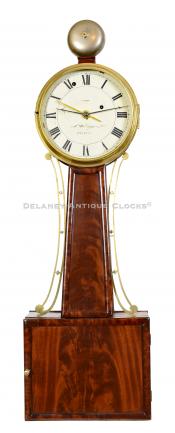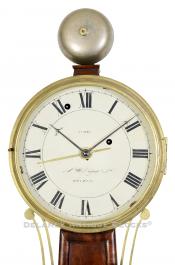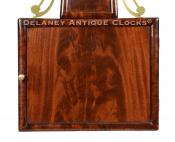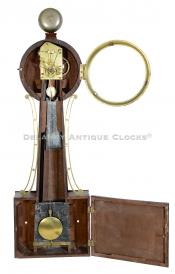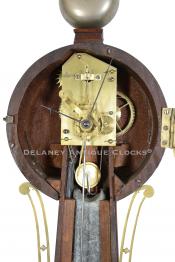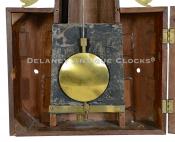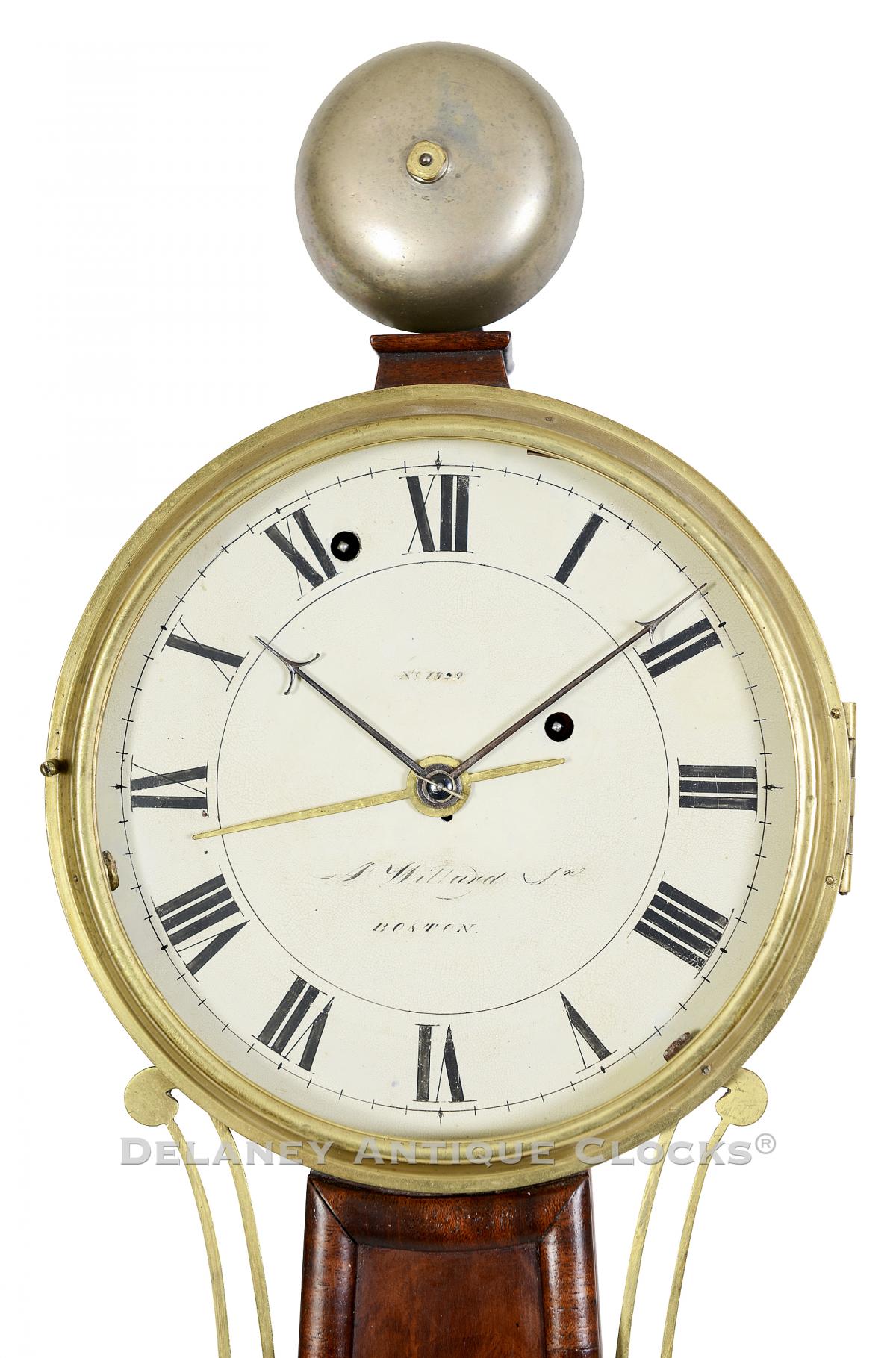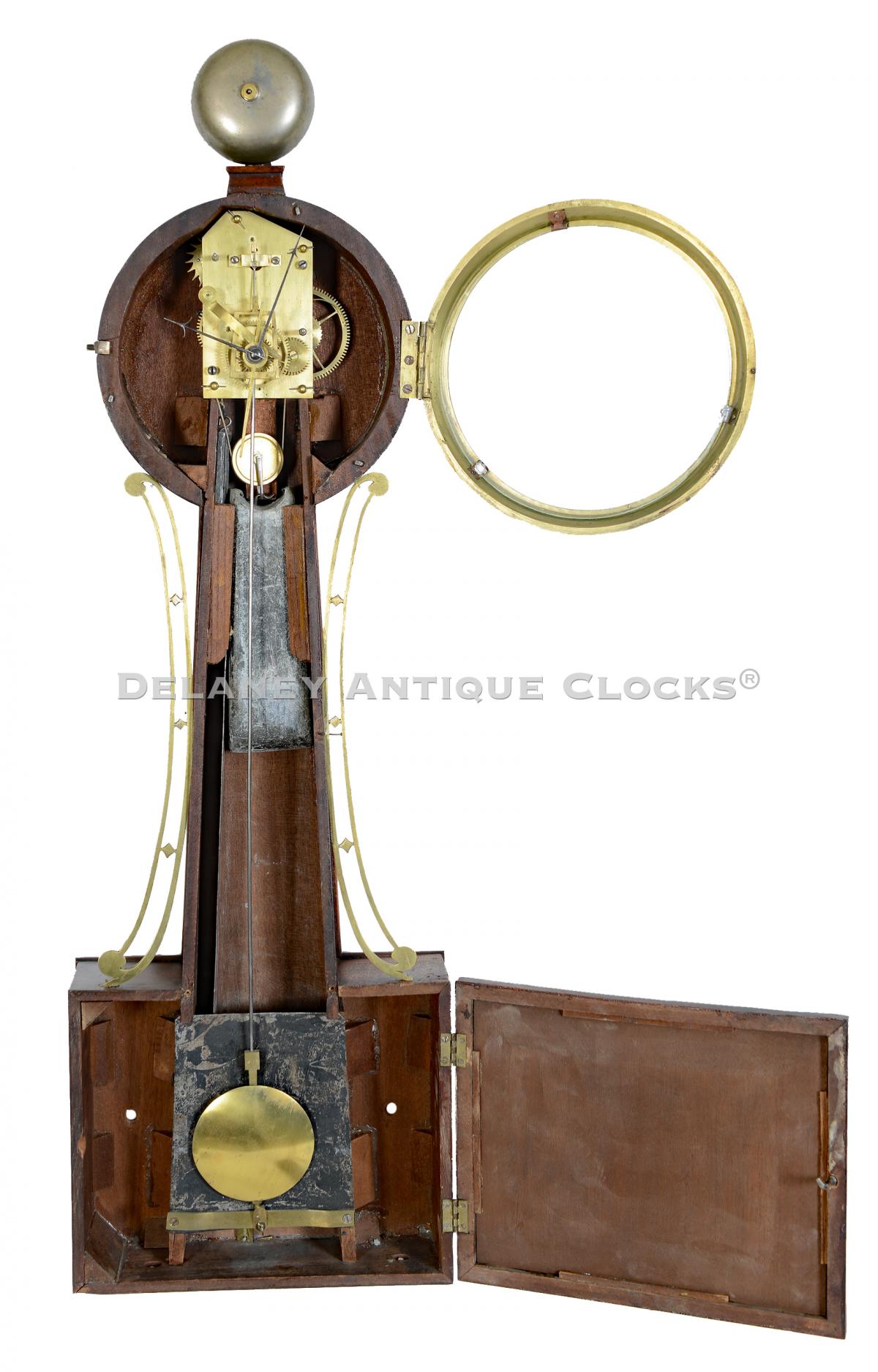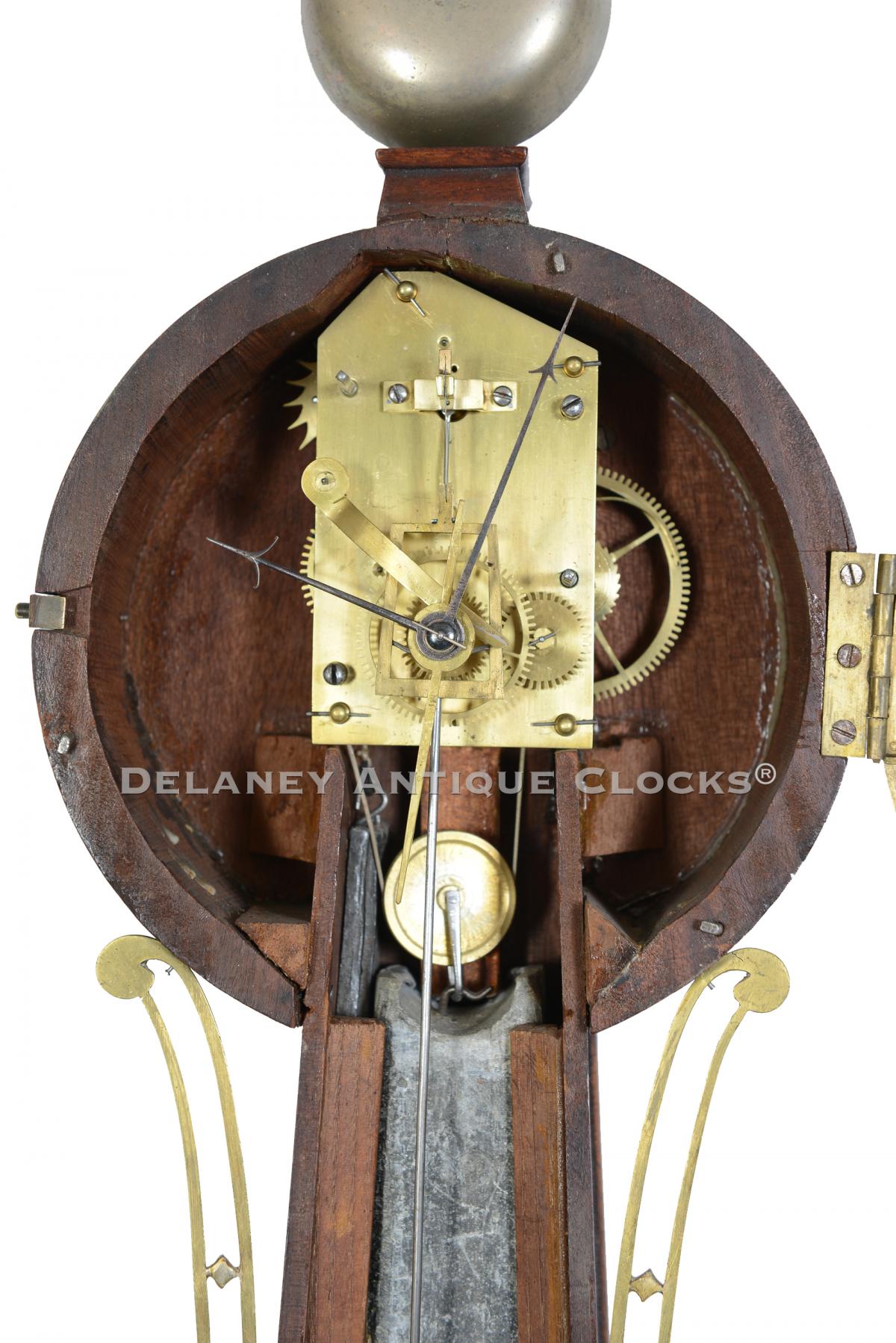Aaron Willard Jr. of Boston, Massachusetts. A wood-paneled timepiece with an alarm. Number 1929. 223220.
This is a fine Federal Massachusetts improved timepiece or "Banjo clock" made by Aaron Willard Jr. of Boston, Massachusetts, circa 1820. This fantastic example is signed and numbered on the dial, the movement is equipped with an alarm, and the half-round frames are fitted with vibrantly figured mahogany panels.
The handsome example features a case constructed in mahogany, half-rounded frames, and mahogany panels. This formatting is commonly known as a "wood front." This simple case presentation became popular in Boston from 1817 through 1830 due in part to the forms' simplicity. The distinctive scroll sidearms and the bezel are brass. A bell is mounted above the plinth. The inclusion of the bell suggests that this is a notable example.
The dial is protected by the glass in the bezel. This is an original dial that is in very good condition. The Maker's name and working location are boldly signed and are still legible after 200 years. Paul Foley, author of "Willard's Patent Time Pieces," attributes this unique script signature to ornamental artist Charles Bullard. Bullard is known to have worked with the Willards in Roxbury. The signature reads, “A. Willard, Jr. / Boston.“ This clock is also numbered on the dial, “No. 1929.” Roman-style hour numerals are used to demark the hours. The minute ring is segmented with dashes. Arrow pointers are used at the quarter-hour positions. Two elegantly hand-filed steel barbed hands show the time. The third brass hand is used to set the alarm.
The movement is mounted in the case behind the dial. It is secured to the backboard with diagonally positioned through bolts. It is incredible that these have survived and remain with this clock. The brass-constructed movement is weight-driven and designed to run for eight days fully wound. Four brass pillars secure the brass plates. The gearing is also brass, and the shafts and pinions that support them are hardened steel. The escapement is designed as a recoil format. The pendulum bob is lead and covered with brass. It swings in front of a long rectangular-shaped tie-down. This mechanism is fitted with an alarm feature. The gearing for this is mounted in between the movement plates aside of the time-train. The alarm is also powered by a separate drive weight wound with a key through the front of the dial. The weight is a sliver of lead and is guided through a narrow channel in the throat of the case to the left of the time weight, which is standard size. The alarm strikes a bell, which is mounted above the case. A mahogany plinth supports it, and the bell replaces the traditional finial. Overall, the movement is of excellent quality, which is typical of this Maker.
Inventory number 223220.
Dimensions: Length 33" Width 15 1/2" Depth 6 1/2"
Aaron Willard Jr. was born in Roxbury, Massachusetts, on June 29, 1783. He had the good fortune of being born into America's leading clockmaking family. His father, Aaron, and uncle Simon had recently moved from the rural community of Grafton and began a productive career manufacturing high-quality clocks in this new ideal location. Based on the traditions of the day, it is thought that Aaron Jr. probably learned the skill of clockmaking from his family. We have owned a large number of wall timepieces or more commonly called banjo clocks, that this talented maker made. Based on the numbers seen in the marketplace, it is logical to assume he was one of the most prolific makers of this form. We have also owned a fair number of tall case clocks, Massachusetts shelf clocks, and gallery clocks. Aaron Jr. retired from clockmaking sometime around 1850 and moved to Newton, Massachusetts. He died on May 2, 1864

